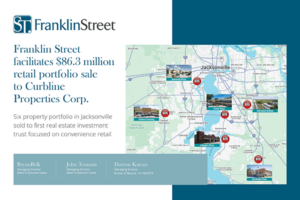Are you protecting your homeowners or condo association as much as possible with your insurance decisions?
Here our experts, both in the legal and insurance industries, tell us the nine most common insurance mistakes boards make to their HOA’s detriment.
1. Not paying attention to your policy. “One of the most simple things boards do wrong is not having the right coverage before the pipe bursts on the 22nd floor, there’s a fire, or there’s a storm,” says Hugh Lumpkin, managing shareholder at the law firm of Ver Ploeg and Lumpkin in Miami, who represents HOAs in insurance matters. “It’s because they don’t review their policy until after they’ve suffered a loss. By then it’s too late.”
2. Not having full coverage. “There are two ways the insurance company can pay,” says Lumpkin. “One is actual cash value, which is replacement cost less depreciation. Associations can also buy replacement cost coverage. In Florida, when we haven’t had hurricanes in a number years—like now—it’s cheaper to get replacement cost coverage, and it adds back into the equation the loss to depreciation. Without it, you’re not replacing your property with like kind and quality materials, and you’ll need those to properly replace everything that was damaged.”
3. Misunderstanding or trying to game coinsurance. “Coinsurance is probably the most misunderstood term in the insurance business,” says Ryan Cassidy, a director at Franklin Street in Miami, an insurer that provides policies to community associations.
Here’s a coinsurance overview. If you don’t insure your structure for the full amount of its value, your insurer may utilize the coinsurance clause in your policy to penalize you when it comes time to make a claim. For example, if your building is insured for $900,000, yet the value is $1 million, your insurer may determine that it will only cover 90% of any claim.
“Coinsurance keeps associations from underinsuring their buildings in an effort to pay less in insurance premiums,” says Cassidy. “It’s an agreement between you and your insurance company that you’ll keep your insurance values to a certain percentage of your property value.
“Coinsurance becomes a problem in two ways,” adds Cassidy. “One, you have to choose the right coinsurance for your situation. Boards sometimes don’t understand their coinsurance clause, and they’ll insure their property at a low property value thinking they’re cheating the system. But they’re cheating themselves. A second mistake is that material, labor, and other building costs have been dropping. So your replacement cost may have actually gone down, and your HOA could be paying too much for the replacement cost coverage.
“So the value of your building should be reevaluated frequently because your HOA could be paying too much for replacement cost. Or, because you haven’t had an appraisal in forever, you could be falling under a coinsurance situation,” says Cassidy.
Lumpkin agrees. “Many associations have found they weren’t insured to value,” he says. “Boards ought to be appraising their property every three years—particularly in times like this when values fluctuate.”
4. You’re not documenting conditions. “Some boards don’t properly document the condition of their property before something happens,” says Lumpkin. “In the wake of a disaster or even a routine claim, a carrier will adjust the loss based on the condition of the property at the time of the loss. If a roof is 20 years old and they decide it has a useful life of 21 years, they’ll offer much less than replacement value. But if an association has good recordkeeping and takes pictures of the property occasionally, it can often get a lot more money. It’s a baseline assessment. I tell people it’s like going to see a doctor every year. The same is true for association property. You need to periodically review your entire property to see if it’s been maintained properly, and if it has, take pictures.”
5. You’re not getting credit for maintenance and upgrades. “In states like Florida, insurers offer credits for upgrades like wind mitigation efforts,” says Cassidy. “A new roof or high-impact glass are going to be the highest improvements when it comes to wind credits. Have an agent who understands changes that happen to your building and how they affect your wind credits.”
6. Getting too many bids. “Dealing with more than two insurance agents is actually more harmful than good for an association,” says Cassidy. “Boards are used to having three bids every time they go to market. But unlike contractors, insurance brokers don’t figure out prices in house. We go out to insurance companies. When you have more than one agent doing that, insurance companies are seeing the same bid, and they can get irritated. They’re dealing with what they perceive as a bunch of price shoppers, and they may not be giving you the best rates. Instead of getting three bids each from five agents, get three from one or two agents.”
7. Not creating an insurance emergency kit in advance. “In the wake of a loss, boards are on their heels, in disarray, and maybe even financially distressed, so they tend to not be very good at documenting what they do,” says Lumpkin. “Appoint someone to be your historian, the person who will take pictures, keep a diary, and work with the insurance company. We tell people to put together a storm kit beforehand. It should include a copy of your insurance policy, a camera, and phone numbers for all the important people involved and for companies like water restoration firms so they can be immediately called.”
8. Not getting your deductible in order before you have to come up with it. “People don’t have money after a storm or incident,” says Lumpkin. “Most condo associations have really big deductibles. If you have a really big deductible and the first time you think of funding it is after an incident, that’s a problem. When you don’t need the money, go to a bank and get a line of credit because you can get a more favorable interest rate then. Or you have to establish reserves. You want to be able to cover the deductible or you’ll be doing special or emergency assessments on owners [who will be] probably facing their own costs for repairs.”
9. Highballing your claim. “Make sure when you’re adjusting your loss, be it under replacement cost or adjusted cash value, you get a good estimate and present it to the carrier for consideration,” says Lumpkin. “I don’t care who prepares it as long as it’s not exaggerated. That’s a fatal mistake. Insurers completely discount your claim if there’s fraud, which can be a disagreement over a value that’s excessive. For example, you submit a $10 million claim, and you have only $1 million in harm. They can deny your claim even if you really did have $1 million in damage.“ Download PDF



